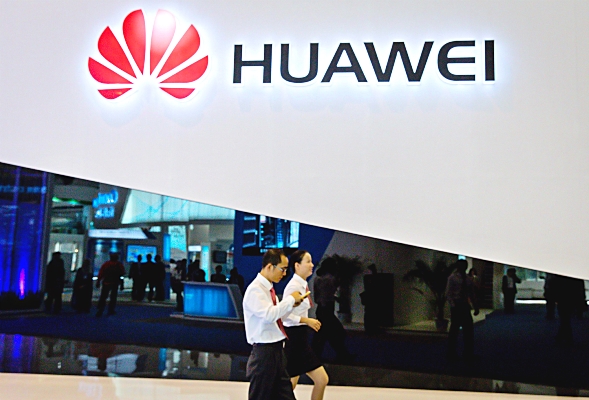CommunicAsia2015 Summit speaker and exhibitor Huawei shares how innovation and technology are driving the Smart City reality
What do you envision when you think of Smart Cities? While flying cars, holographic communication screens, or even teleportation seem far-fetched, the hyper-connectedness of today’s world and the Internet of Things (IoT) is making Smart City living a reality. Huawei, leading ICT solutions provider, sees the following four areas of opportunities where technology and innovation play a key role in the building of smarter cities:
City planning and management with sustainability
With Asia Pacific accounting for nearly half of global greenhouse gas emissions[1], one of the key areas that the United Nations Environment Programme focuses on is the role of technology in adapting to climate change whilst tackling the issue. Environmental and economic reasons are key push factors pointing to why non-renewable fuel sources are becoming less viable as options for powering everyday lives – particularly in the area of transportation. Almost all the energy sourced to power our modes of transportation is non-renewable. Environmental and climate woes aside, security of energy supply is another area of concern as cities develop, driving the shift to smarter transportation alternatives.
As part of building a Smart City, Huawei sees Smart Transportation categorized into the following: Better utilization of existing infrastructure, vehicle reduction and changing the mix of vehicles. Huawei innovates solutions such as smart sensors that are capable of constantly measuring and optimizing vehicle resources to lower current vehicle carbon emissions leading to lower carbon emissions and extending vehicle lifespan and smart traffic diversion which reduce wear and tear of roads. Reducing the number of vehicles on our roads involves encouraging commuters onto smarter public transport. Finally, the introduction of electric cars and bio-fuel vehicles leverage sustainable energy resources, making active transport modes safer and more accessible.
“Huawei has globally committed to strengthening our energy management and smarter city initiatives. In the transportation sector, Huawei has worked closely with both public and private sector partners in developing innovative solutions that address environmental and climate change issues. Achieving sustainable change in this space isn’t trivial but Huawei’s diverse portfolio of technology and business solutions are well positioned to help realize greener, smarter transport options,” said Barry Lerner PE, Regional Chief Information Officer, Huawei Solutions Marketing Southern Pacific Region.
Enabling communications for knowledge transfer and efficiency for businesses
Knowledge and skills transfer is a priority for most businesses, and often encouraged by governments around the world, including Singapore. Businesses need to be equipped with infrastructures and applications to support knowledge and information transfer – this is where technology and innovation play an important role in enabling education in particular. For students, whether the young or working professionals furthering their studies, hyper-connectedness driven by high mobile penetration has changed how education is being consumed. In the past, the majority of students would most likely enter University after High School and attend the campus in person. Now, many students are mature in age, others attend lectures remotely and still others access online content which the university has made available. Huawei sees digital technology as a key driver of change providing the education sector the competitive edge. To help create a more connected world, Huawei provides a range of solutions that speak to content access (with E-Course), to enabling students with physical and virtual classroom presences (with E-Class) and ease in management of resources and lecture materials (with E-Management).
“Asia is constantly growing, with increasingly diverse cultures, and Singapore is in a unique position to be the MOOC (Massive Open Online Courses) provider of Asia. Huawei believes that Singapore can also utilize digital technology to bring education to Smart End Devices within a MOOC, taking advantage of new innovative IoT devices such as wearable devices, smart glasses, smart tablets, and more, to take knowledge consumption to the next level,” added Lerner PE.
Smarter Home Living to enable consumers’ digital life
Consumers’ lives are becoming increasingly digitized bringing future families the opportunity to realizing the concept of automated smart homes that protects, educates, entertains while ensuring the use of utilities are environmentally friendly. As part of Huawei’s work in building a better connected world, they have developed a range of products which seek to address key components of a holistic Smart Home and families’ digital life that enables connectivity with high-speed fiber optic broadband to support HD TVs, and a tool to manage multiple devices with the Smart Home Controller.
“Huawei is at the forefront of the provision of innovative solutions which enable families to improve their digital life. As part of our work in building a better connected world we have developed a range of products which seek to address key components of an holistic Smart Home and family digital life,” said Lerner PE.
“As part of enhancing each family’s digital life, there is a move to automate the smart home and Huawei is heavily involved in this process as well. We understand that no one vendor has all the solutions so Huawei is taking an open and collaborative approach to enable an IOT ecosystem which will provide the greatest benefit for consumers of this technology,” continued Lerner PE.
For more insights and demonstrations on how smart innovations and technology can build a Smart City, please meet Barry Lerner PE, Regional Chief Information Officer, Huawei Solutions Marketing Southern Pacific Region at CommunicAsia2015 this June.







